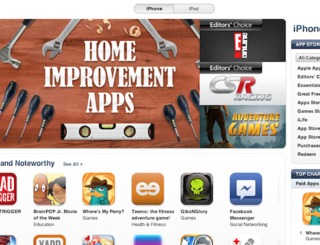YouTube Analytics: Measuring the Value of Your Vid…
September 6, 2012#webdevelopment: 5 Essentials for a Mobile-Friendl…
September 6, 2012By Derek Jansen
“Come 2014, there will be at least one billion mobile payment users around the world.” These are the findings of a study undertaken by IE Market research. Given these stratospheric statistics, it is safe to say that at least some of your current website users are visiting on their mobile phones. Subject them to the torturous navigation of a desktop version using their iPhones or Androids and you can be certain of one thing – they will leave. And never come back.
The world of technology is rapidly evolving, so much so that what was relevant yesterday is often obsolete today. It therefore pays to be as informed (and flexible) as possible when developing your site. Here we’ll look at some absolute essentials that need to be implemented on-site to ensure that your mobile visitors don’t head out the door immediately after arriving.
5 Basics – Get These Right First
Create a Mobile Sub-Domain
The first step in becoming mobile friendly is providing a separate mobile-friendly website. It’s justnot wise to try serve both desktop and mobile users on one site. Create a subdomain (generally something like m.yoursite.com) and install a detection and redirection script (there are many options to choose from) on your desktop version to ensure that mobile visitors are automatically sent (or at least given the option to go) to your mobile site.
Create a Smart Navigation
The second thing you should do is to create a smart navigation. What this means is generating a clean and unobtrusive navigation for your website by considering the practical implications for a mobile user:
* Are the key areas of the website easy to access using big buttons (or is it more likely that a mobile user is going to hit another button by mistake?)
* Are important pages prioritized and other de-prioritized? It’s unlikely that mobile users are that interested in your privacy policy or community initiative. Get them out of the way and make buying/inquiring easier for the mobile user.
Basically, you need to offer visitors distinct and clear methods for getting to your most essential content.
Write Clear, Concise Content
Next on the agenda is content. Ensure that your writing is clear, concise and to the point. Now more than ever, you will want to seize the reader’s attention right away. Ensure you have persuasive headlines which enable readers to know what they are going to experience. Content should also be unique, original and informative. Get to the point and initiate a call to action as quickly as possible. As far as mobile copy is concerned, less is definitely more.
Scrap the JavaScript and Flash
The fourth essential is to avoid all JavaScript and Flash. All justifications aside concerning the significance (and aesthetic appeal) of Flash, it is typically a safe wager that not all cellular devices can support both of these technologies. The ideal practice would be to maintain plain HTML standards for your mobile website. Remember that you’d rather have a user see a slightly less “exciting” page than no page at all.
Mobile Preview
The last step is always to run your website through W3C Mobile to ensure compatibility across web browsers and devices. Be sure to dig as deep as possible and not just settle for a simple homepage check. The last thing you want is a poor conversion rate caused by a dysfunctional contact page script.
Wrapping Up
Whether we like it or not, the fact is that more and more users are accessing the web via mobile, and we as marketers need to adapt to this. The mobile space is incredibly dynamic and ever-evolving, and as such it really does pay to stay informed and up-to-date with mobile web development, or partner with someone who does.
